The iPhone 14 Pro and Pro Max introduce some major improvements in camera technology, adding a 48-megapixel lens and low-light improvements across all lenses with the new Photonic Engine. We've spent the last week working on an in-depth comparison that pits the new iPhone 14 Pro Max against the prior-generation iPhone 13 Pro Max to see just how much better the iPhone 14 Pro Max can be.
Though there's a 48-megapixel lens, the iPhone 14 Pro models are using pixel binning to combine four pixels into one, resulting in a standard 12-megapixel photo unless 48-megapixel images are enabled through the ProRAW toggle. When comparing a 12-megapixel image from the iPhone 14 Pro Max to a 12-megapixel image from the iPhone 13 Pro Max, there's not an immediate difference in quality, especially when lighting is ideal.
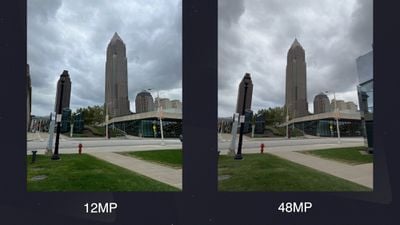
You will see some improvements in shadows and highlights for improved HDR, and the colors can be more vibrant on the iPhone 14 Pro Max, but it's a subtle difference in most cases.
Where you'll notice the biggest upgrade is turning on ProRAW for those higher quality 48-megapixel images. There is so much more detail in the 48-megapixel image compared to the 12-megapixel image from the iPhone 13 Pro Max, but file size is a major downside. 48-megapixel images can be over 60MB in size, which will quickly eat up your iPhone storage. Still, if you want to take a special photo in the highest quality, toggle on that ProRAW option and you'll see notable improvements over what you can get from the iPhone 13 Pro Max.
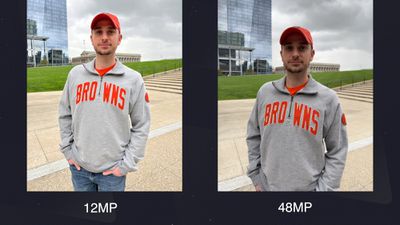
Apple is using the 48-megapixel camera for a new 2x telephoto option, which crops in to the image from the full resolution. This adds a whole new focal length to the iPhone 14 Pro models, with the iPhone 13 Pro models limited to 3x telephoto. 2x telephoto is a great length for portraits or if you just want to zoom in a bit, and because it's the main camera, the quality is better than you get with the telephoto lens even with the crop.
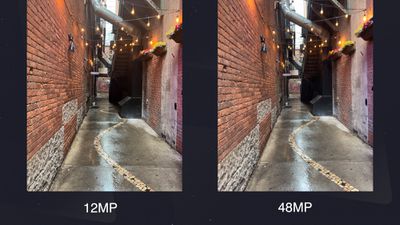
According to Apple, the Photonic Engine that is designed to enable Deep Fusion earlier in the computational photography process brings at least 2x improvement to all of the camera lenses, but it's hard to see that improvement in full in side by side Night Mode photos from the iPhone 14 Pro Max and iPhone 13 Pro Max.
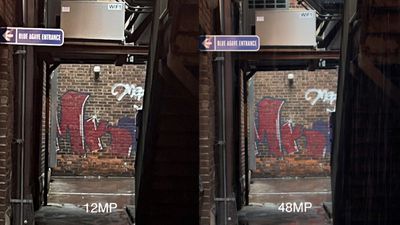
There's less noise and less light reflection in the iPhone 14 Pro Max Night Mode photos, so there is a difference, but it's not night and day. Some of the iPhone 14 Pro Max photos can also look brighter, but there are no drastic upgrades here because the iPhone 13 Pro Max was already great.

As for video, Apple added Action Mode, which is meant to mimic the stabilization you get with a gimbal, plus there are improvements to Cinematic Mode. Cinematic Mode now works in 4K at 24fps, up from the max 1080p resolution on the iPhone 13 Pro Max, so it's just more flexible for those who like to shoot in 4K.
Action Mode does indeed improve stabilization when you're shooting video while moving, so it's useful for filming a pet or a child while running, or taking action shots. Since it's limited to 2.8K resolution, you probably won't want to have it enabled at all times because it's a downgrade over 4K, but it's a solid feature if you need the extra stabilization. In many cases, you may not need the stabilization boost provided by Action Mode as the built-in default stabilization is good enough.
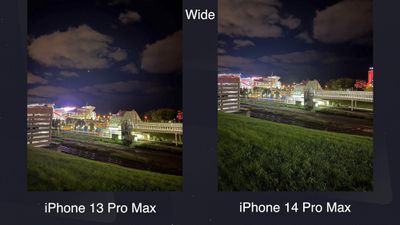
The iPhone 14 Pro Max cameras are a definite improvement over the iPhone 13 Pro Max cameras, but the new features for most people will only be used every now and then rather than on a daily basis. If you've already got an iPhone 13 Pro Max, it's probably not worth upgrading just for the camera alone, but there are of course other features to consider like Dynamic Island, always-on display technology, Emergency SOS via Satellite, and Crash Detection.
What do you think of the iPhone 14 Pro Max camera compared to the iPhone 13 Pro Max camera? Let us know in the comments below and make sure to watch the full video to see both smartphones in action.
























